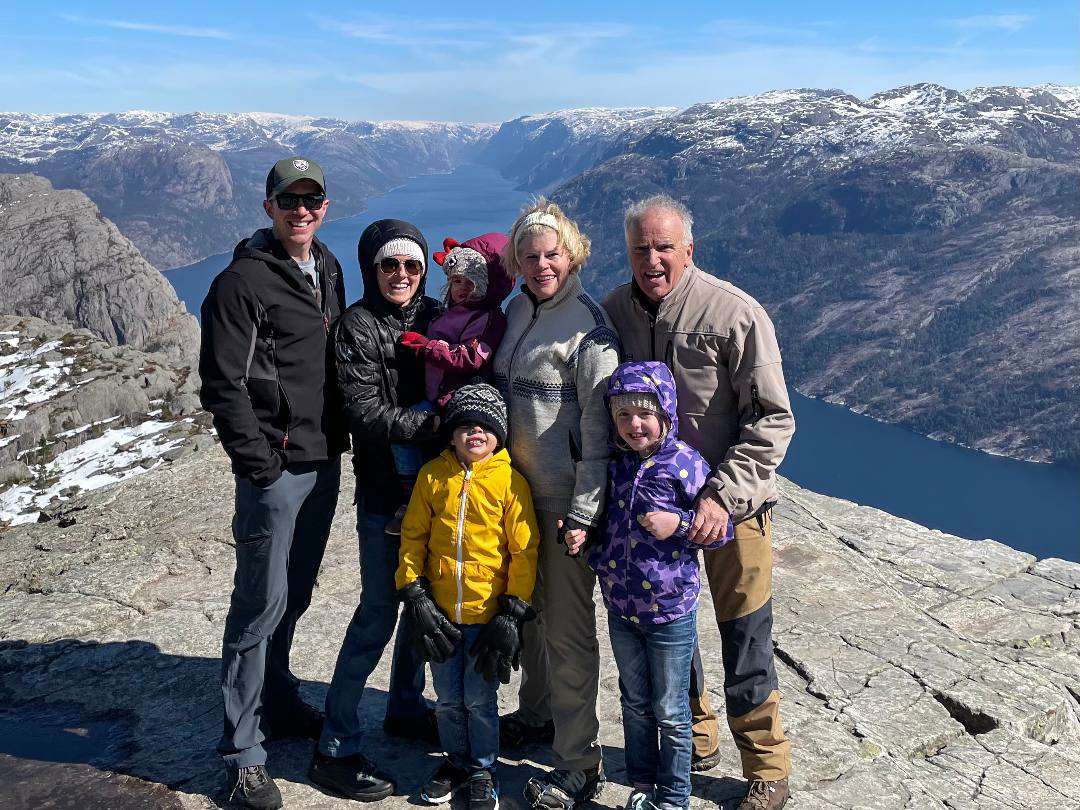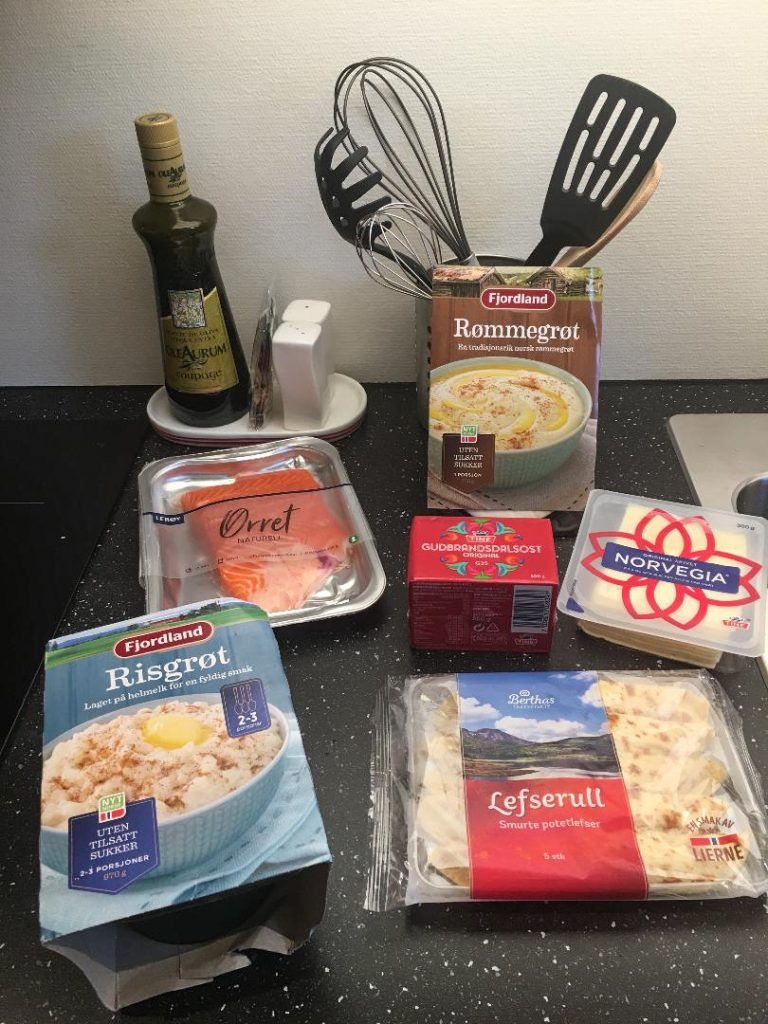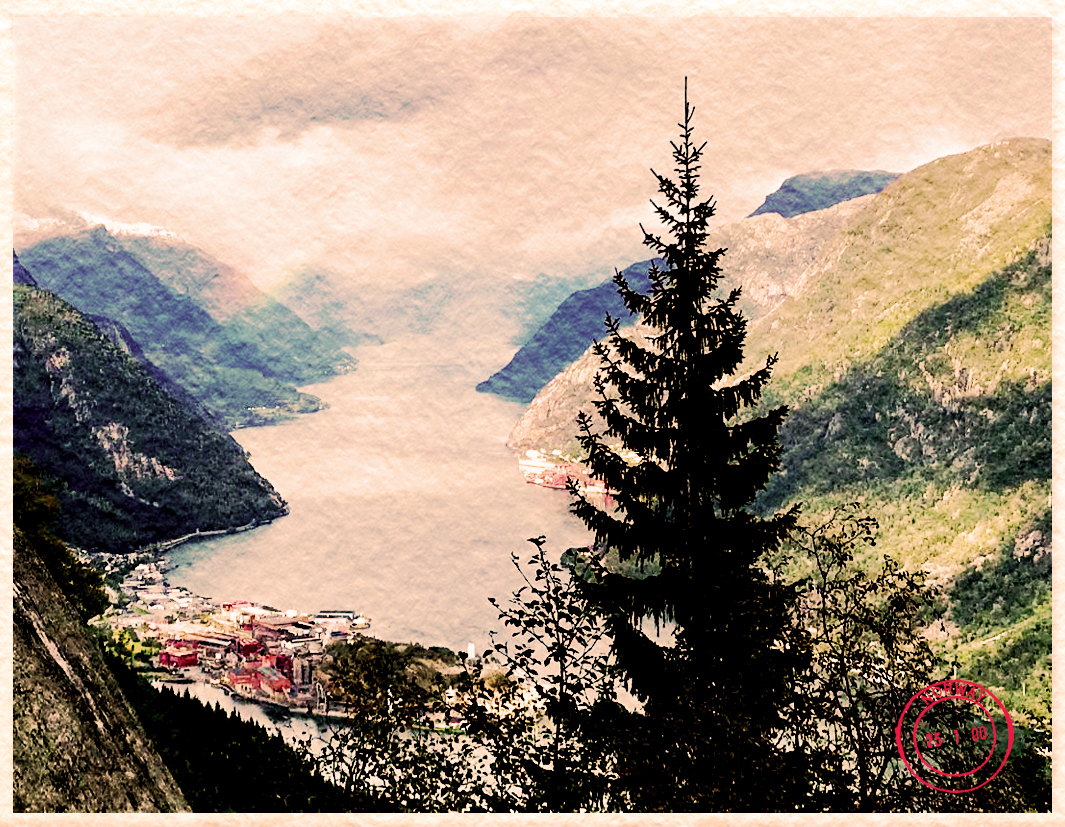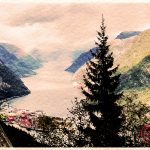A magnificent vista in Odda, Norway.
ARTICLE BY MAGGIE WALLEM ROWE
PHOTOS COURTESY OF MAGGIE WALLEM ROWE
Earlier this year, my husband and I left our home in North Carolina to spend 10 weeks volunteering in Stavanger, Norway. Stavanger is the fourth largest city in Norway, and its location on a peninsula on the southwestern coast with proximity to the North Sea has made it the center for Norway’s prosperous offshore oil industry.
This was our second visit to Norway—our first extended visit lasted 12 weeks in 2019. Although my paternal grandparents, Sigurd and Bertha Nygaard Wallem, grew up in southwest Norway, they immigrated to the United States in the early part of the 20th century, and until that 2019 visit, I had never had an opportunity to visit the land whose culture shaped my American family. After interacting deeply with Norwegians and experiencing their culture for six months split between these two extended stays, I’ve found myself surprised and delighted by many aspects of this beautiful Scandinavian country. Here are seven characteristics I especially appreciate about my ancestral homeland.
1. Men with baby carriages
If Scotland is known for men wearing kilts, perhaps Norway is equally noted for men pushing prams! It’s very common to see young fathers walking, hiking, or biking with little ones in tow.
Norway is noted for its egalitarian culture and certain family-friendly social benefits like the one-year, fully paid parental leave policy: 49 weeks per child (15 weeks reserved for each parent, with the remaining weeks divided between them) with 100% salary coverage or 59 weeks (19 weeks for each parent plus the remaining weeks divided between them) with 80% coverage.
Most Norwegians are also entitled to five weeks of paid vacation per year, plus holidays. The standard workweek is 37.5 hours. Norwegian parents receive subsidies to assist with childcare and preschool expenses (barnehage). If they choose to keep their children at home instead, they still receive the financial assistance. As one mom told us, “The subsidy goes with the child, not the school.”
2. Low crime rate
My cousin Jostein, a recently retired Stavanger police detective, told us that Norway believes crime will be reduced if children bond with their fathers early in life as well as their mothers. Makes sense to me, and the extremely low crime rate seems to bear this out.
Norway, a nation of five million, is ranked as one of the safest countries in the world and has seen a significant decline in crime in recent years, with fewer than 30 murders annually. Gun laws are strictly regulated. Even members of the local politi do not carry guns.
Our Airbnb host in Ulvick, a city north of Stavanger, said he trained as a police officer but became a teacher after they closed the local police station. “No crime to speak of here in the last 30 years,” he reported cheerfully.
On a related note, we’ve traveled thousands of kilometers during our two lengthy stays but have only seen one minor car accident. Curious, I did a bit of research and discovered that Norway’s roads are considered among the safest in the world, with fewer than 100 fatalities nationwide each year.

Author (blonde hair) with family after hiking up Preikestolen, the iconic “Pulpit Rock.”
3. Concern for the environment
Norwegians are very aware that their country’s greatest asset is the extraordinary beauty of its natural resources. Conversely, one of its greatest threats is the effect on the environment of the fossil fuels that have brought the nation tremendous prosperity in the past 50 years. Even an inexperienced eye can see that the glaciers are melting due to global warming.
After oil was discovered in the North Sea in 1969, Norway’s leaders across political and economic lines established a sovereign wealth fund to benefit its citizens that now shows a surplus of $1.5 trillion USD. Norway, in fact, is the world’s largest producer of oil and natural gas outside the Middle East.
Among the many measures taken to protect the environment are tariffs favorable to electric cars, designated paved pathways for bikes and pedestrians, and comprehensive recycling strategies. My husband and I used three different trash receptacles each week, one for organic matter, another for paper and cardboard, and a third for regular waste. All soda bottles and cans are returned to the local grocer for a cash refund.
4. It’s not about me
At a women’s retreat I attended in March, our speaker addressed the topic of spiritual gifts by stating, only half-joking, that it would be hard for “us Norwegians” to even admit we have gifts, because that seems to set us above others. “To acknowledge our giftedness seems to violate the ‘law’ of Jante,” she said with a smile. “We never want to think we are better than anyone else.”
According to Life in Norway, “Janteloven [the law of Jante] at its simplest describes the way that…Norwegians behave: putting society ahead of the individual, not boasting about individual accomplishments, and not being jealous of others.”
This concept offers insight into why a sort of honor code still operates today in Norway. Norwegians are in large part honest, courteous, and welcoming to strangers. They understand the importance of putting the welfare of others ahead of their own. It certainly explains a great deal about the Norwegian-American culture in which I was raised, in which bragging or self-promotion of any kind was simply not done.
Young Norwegians will point out that this unspoken social norm has a downside as well, as it can lead to low self-esteem and lack of entrepreneurship.
5. The food!
I know I’m partial, but I loved the variety of fjord-to-table food available in Norway. We ate lots of fish, of course, as well as Norwegian salmon and reinsdyr (reindeer), both very tender.
When I was a little girl, my great-aunt Martha used to ship gjetost (also called brunost) to us in America every Christmas. Gjetost is a slightly sweet, solid brown cheese made from goat’s and cow’s milk that tastes a bit like caramel. It’s meant to be sliced very thin and served on savory crackers or vafler (heart-shaped Norwegian waffles).
We could also find lefse everywhere in Norway. This soft flatbread is made from potatoes, flour, butter, and cream and is a favorite delicacy among Norwegian-Americans too. It’s served rolled up or cut into triangles with a sweet cinnamon filling.
But when it comes to the one food Americans love to joke about, lutefisk? I did not meet a Norwegian who admitted to actually liking this traditional dish of dried fish fermented in lye!

A sampling of typical Norwegian food items.
6. Friluftsliv, love for the outdoors
Norwegians are known for their love for the outdoors. An oft-repeated rhyme explains their philosophy: Det finnes ikke dårlig vær, bare dårlig klær. (“No bad weather, only bad clothing.”)
When our new friends Justin and Åshild invited us over to dinner, the first order of business was a four kilometer hike up a nearby mountainside, and then we ate. It’s a wonderful way to build up one’s appetite!
When ski season finished, we saw residents of our neighborhood propelling themselves along the paved pedestrian and bike paths on roller skis. Once on a sunset walk, we even saw a young man training his team of sled dogs along the bike path!
Small wonder that Norway took top honors with 37 medals at the 2022 Olympic Winter Games. An affinity for the outdoors is in the DNA of the people.
7. Dressing up for the national holiday
May 17 is the Norwegian National Holiday, better known as Syttende Mai or Constitution Day. It commemorates the signing of Norway’s constitution on May 17, 1814, an event inspired by the United States Declaration of Independence and the French Revolution.
Norway is a constitutional monarchy with a representative parliamentary system of government where the king is head of state and the prime minister is head of government. Norway is a founding member of NATO and the UN, among other international alliances. It also ranks first in the world’s Democracy Index. Politics in this nation are not polarized, and the residents we spoke with generally respected their government across party lines.
Until we arrived, I assumed that Syttende Mai, also celebrated in large Norwegian-American communities in the U.S., was similar to America’s July Fourth celebrations. What’s notably different, though, is that the parades here are of a non-military nature, and fireworks are reserved for New Year’s Eve. Nearly everyone dresses in their finest traditional clothing for Syttende Mai.
When Norwegian young people are confirmed, in traditionally Christian ceremony with a civil confirmation available since 1951, their families often gift them with bespoke, elaborately embroidered folk costumes called bunads. The individuality of the ensemble typically indicates the birth region or residential connection of the wearer. For women, a bunad dress includes an ankle-length wool skirt with apron, vest, a long-sleeved white blouse, a scarf or shawl, and silver jewelry. Men wear breeches, waistcoats, and knee-length hose. These intriguing national costumes add both color and dignity to Syttende Mai celebrations.
My husband and I plan to return to Norway again in the spring of 2024. If you choose to journey to “the land of the midnight sun,” you’ll discover as we did that one visit is simply not enough. With its breathtaking mountain vistas and crystal-clear fjords, the country has earned its reputation as one of the most beautiful in the world. Norway’s greatest national resource, however, is the heart and soul of its people.

Young women dressed in bunads, the traditional Norwegian costume.


